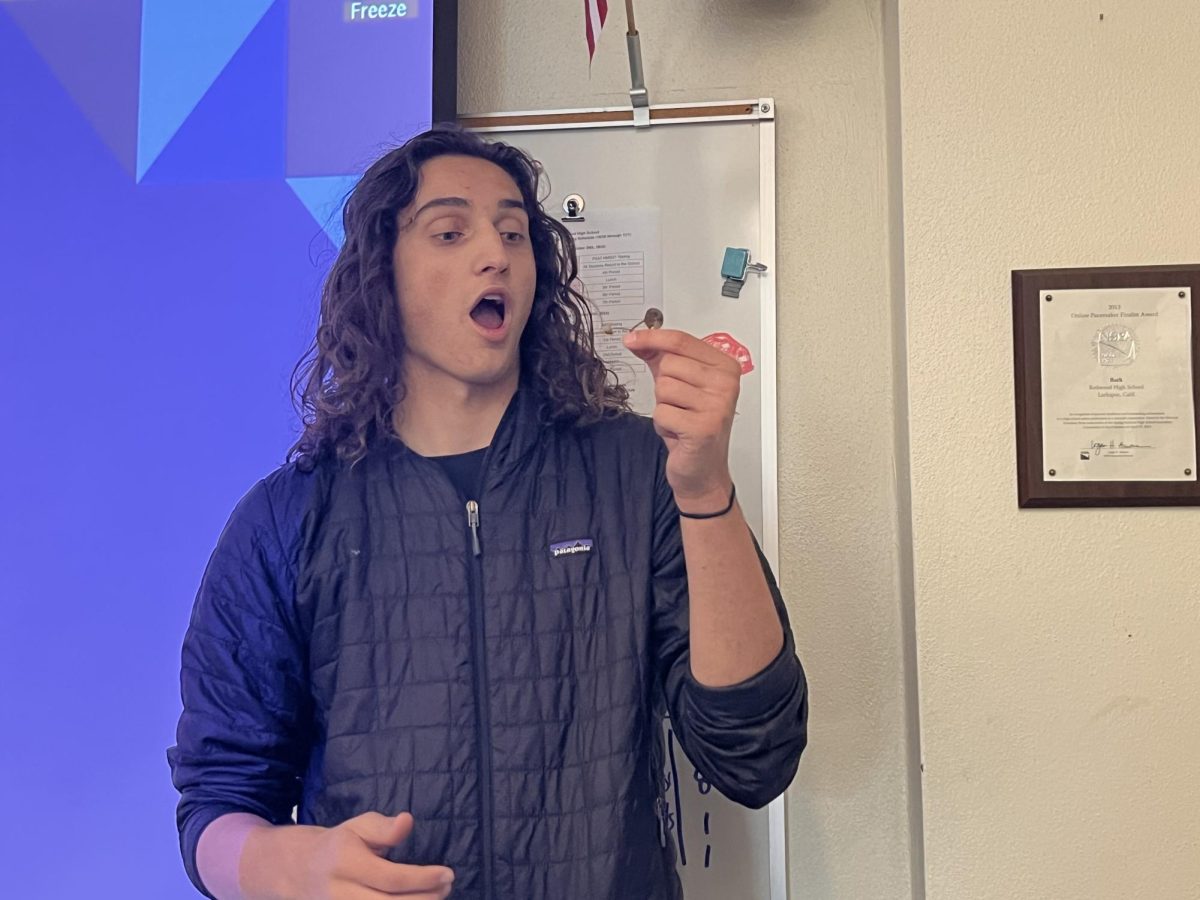While most seniors prepare to leave home to attend college in the fall, several students get ready for an even bigger leap: college in a foreign country.
As college students increasingly seek out study abroad opportunities, according to an Institute of International Education “Open Doors” report, many colleges, including the University of Southern California (USC), Northeastern University and UC Berkeley, have begun to offer high school seniors a chance to study abroad freshman year as spring semester or sophomore year admitted students.
Senior Aarti Dixit will be one of a handful of seniors who plans to spend part of their freshman year abroad.

Even though she was accepted to USC as a spring admit, Dixit chose to spend all of next year at Richmond, the American International University in London.
“I feel that it’s easier to begin at USC sophomore year because I will be able to finish all of my general education [requirements] my freshman year in London,” Dixit said.
According to Dixit, who plans to pursue a pre-med track, she will not have to take as many requirements as pre-med students who spend all four years at USC because she is unable to take as many courses while abroad. The leeway offered through this program was a factor that influenced her decision to spend the year abroad.
If Dixit was to begin at USC spring semester, she would have to immediately start her pre-med requirements and take additional science courses such as ecology, which she now does not have to take.
However, Dixit said she will need to take some courses over the summer to make up for her lighter courseload in London. This summer Dixit will be taking biology and chemistry courses at UC Berkeley.

Like Dixit, senior Bryte Darden will spend her next year abroad; however, she will be studying at the American University of Paris through the Trojan Transfer Plan, a program designed for a select group of freshmen to spend a year abroad and then transfer to USC sophomore year.
Neither Darden nor Dixit had heard of the USC first year abroad programs before being accepted to them, but Darden had previously looked into gap year programs.
“I knew that I wanted to do study abroad some time in college so [the Trojan Transfer Plan] worked perfectly,” Darden said. “It’s going to be a study abroad and gap year combined. It connected everything I wanted to do.”
Even though Darden, who plans to study music at USC, does not speak French, she will be taking a French class in addition to USC freshman math and English classes.
“I will need to take the same number of classes [as a freshman at USC] and I was talking to Anne Laurberg [of RHS class of 2016] who did the exact same program and she said that the classes are actually pretty hard because they need to meet the same requirements as freshman classes at USC,” Darden said.
Unlike students who were accepted into the Trojan Transfer Plan, Dixit will not need to fulfill the same basic requirements needed to begin at USC next year, according to Dixit.
“I don’t have to fulfill transfer requirements unlike the people in the Trojan Transfer Plan because I already got admitted. They obviously still want me to keep a good GPA, it will just be a little more lenient because I had better grades in high school,” Dixit said.
According to both the Richmond and the American University in Paris’ Trojan Transfer Plan websites, students who hope to transfer to USC their sophomore year must continue to meet basic grade requirements, which include earning “a cumulative grade point average of at least 3.30 in USC-transferable courses, with no individual grade below C (2.0).”
Both schools also add that “the Trojan Transfer Plan typically requires a 3.6 GPA or higher [but] USC grants a modest dispensation on the GPA expectation given the experiential benefits of living and studying abroad.”
According to Meg Heimbrodt, Redwood’s College & Career Specialist, schools like USC and Northeastern offer spring semester and sophomore year admissions as a way for them to control their class sizes.
“The schools who are very selective and very competitive are doing a clever thing to manage their enrollment,” Heimbrodt said. “They may have a really qualified person who they want to come to their school but they don’t have room in their freshman class because they already have all of the people they think they can handle.”
Colleges know that some students will transfer out between their freshman and sophomore years, Heimbrodt said, and the students who spend their first year or semester off campus will take the place of a student who left.
“The schools know that there is going to be some attrition by sophomore year. Some people are going to transfer, some people are going to drop out because they didn’t get good grades or some people might do study abroad sophomore year, so [the schools] are managing this really fine window that’s not open for a lot of people,” Heimbrodt said.

According to Heimbrodt, students admitted to USC as spring admits have the option to take classes at a community college before beginning at USC, but many students prefer to go abroad due to the negative stigma associated with attending a community college.
“A lot of people, especially if they are getting into USC, are not going to look at community college as an option. There is a prestige factor involved and unfortunately there still is a taboo about community college so they’d prefer to do the year abroad if money is not an issue,” Heimbrodt said.
However, Heimbrodt said that she is not entirely impressed with the various transfer plans and believes that it creates a disadvantage for students who want to transfer into a school through the traditional pathway.
“It’s interesting that these programs are not widely public knowledge. The schools really try to keep these programs under wraps because it’s a little bit of a weird thing,” Heimbrodt said. “It’s a disadvantage to someone who is going to community college and wants to transfer because [the students in the transfer programs] already have an edge, they’re basically in.”
According to Heimbrodt, other colleges are not pleased that their counterparts offer sophomore year transfer plans because it disrupts their enrollment as well.
“Other U.S. institutions and colleges don’t really like it because they’re thinking, ‘Oh, I’m going to get somebody here for a year and then they are going to transfer back to the school that they were originally planning on going to.’ It’s a domino effect,” Heimbrodt said.












